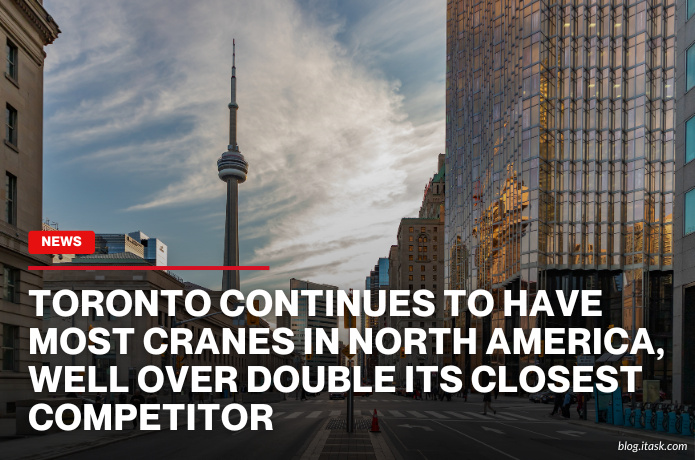Toronto Continues To Have Most Cranes In North America, Well Over Double Its Closest Competitor
Toronto Continues To Have Most Cranes In North America, Well Over Double Its Closest Competitor

Toronto continues to dominate North America's construction scene, boasting 106 active tower cranes in the first quarter of 2025, according to Rider Levett Bucknall's (RLB) latest Crane Index report. This figure is more than double that of Los Angeles, the next closest city, which recorded 42 cranes. Despite RLB narrowing its survey area in 2024 to focus solely on Toronto's downtown core—a 3.5-kilometre radius from Bloor Street West and Avenue Road—the city's crane count remains unmatched.
The increase from 83 cranes in August 2024 to 106 in February 2025 marks a 20% rise, signaling a strengthening construction market. This growth trend has been consistent since Q1 2021, when Toronto had 208 cranes before the survey parameters were adjusted. The city's commitment to infrastructure is evident in its record-setting $59.6 billion capital budget for this year, with $10 billion allocated specifically for home construction.
Residential projects lead the surge, accounting for 56 cranes, followed by 33 cranes dedicated to mixed-use developments. The remaining 17 cranes are distributed among healthcare, education, transportation, commercial, cultural, sports, and public assembly projects. This diverse allocation underscores Toronto's multifaceted growth and its efforts to address various urban needs.
Calgary, another Canadian city, maintained its crane count at 24, with residential projects comprising the majority. The city experienced a 12% increase in residential building permits in 2024, indicating a move toward a balanced housing market by 2025. Calgary's economic growth is projected at 2.8% for 2025, surpassing the national average, driven by initiatives like the Trans Mountain pipeline expansion and robust sectors in warehousing, transportation, and distribution.
The RLB report highlights that Toronto's crane count has been steadily climbing since 2021, reflecting a resilient construction sector despite economic fluctuations. This upward trend is expected to continue, fueled by significant investments in housing and infrastructure. The city's proactive approach to development positions it as a leader in North American urban growth.
As Toronto continues to outpace other major cities in construction activity, its skyline evolves, symbolizing a city in constant transformation. The sustained increase in crane numbers not only indicates robust development but also reflects Toronto's commitment to addressing housing demands and enhancing urban infrastructure. With strategic investments and a clear vision, Toronto sets a benchmark for urban development across the continent.
